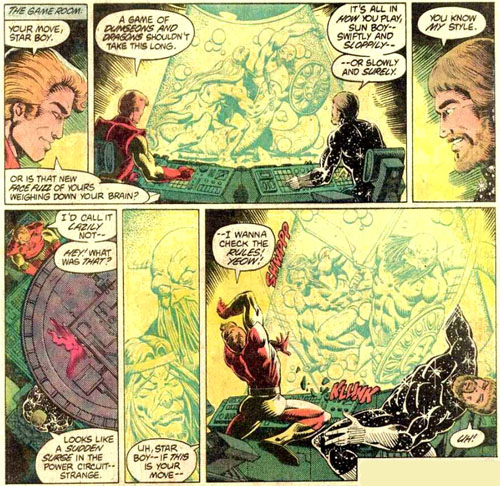
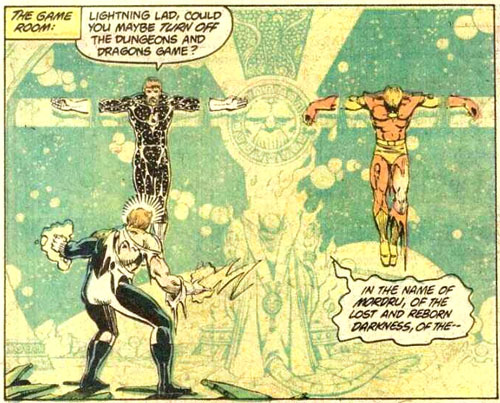
NO WAIT
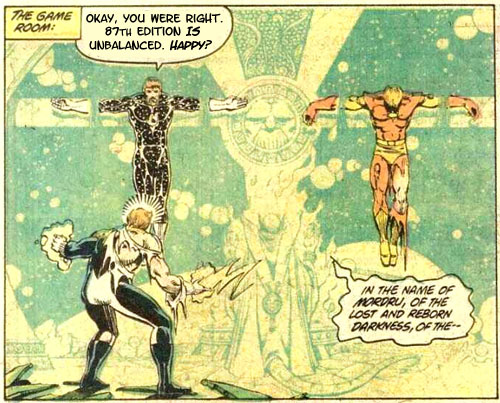
NO WAIT
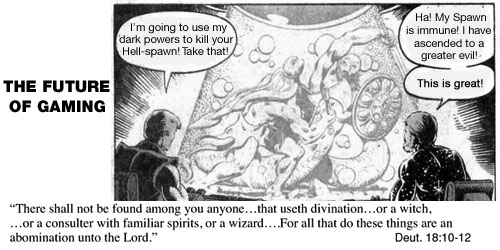
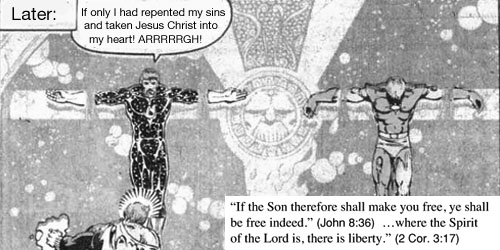
24
Mar
Every so often I get a comment on my blog that makes blogging worthwhile. One of them is this comment I got on a post about comic book artist Samm Schwartz:
I’m Sam Schwartz’s daughter. I googled him and was surprised to see a substantial number of hits. I think it’s terrific that people are still talking about him!
(No, she’s not mis-spelling her father’s name; as his Wikipedia entry notes, his name was actually “Sam,” and most people called him that in everyday life, but at some point in the ’40s he started signing his drawings “Samm.”)
Well, that got me thinking a bit more about Schwartz, the first comic book artist whose style I could identify as a child. And so did this post by veteran artist/inker Kevin Nowlan about some pages of original Schwartz art and how good Schwartz was at making characters fall down. So I decided I’d comment on a different Schwartz story:
Now, one thing that I can’t really put into words is that Jughead has a bigger range in Schwartz’s stories than he does elsewhere. He’s not exactly a character you can do a lot with, visually, but Samm always seemed to understand how much could be conveyed by having him open his eyes at the right time (or open his eyes halfway instead of all the way), or putting some extra folds in his very simplified clothes.
But the story does illustrate a few tricks Schwartz was in love with:
1. Letting the characters violate the panel boundaries. This wasn’t a new technique or anything; it was especially common in the Golden Age. But as the technique became less common, Schwartz started to use it more often to put extra interest into the pages. After he left DC and came back to Archie in 1969, he used this in virtually all his stories. Characters’ legs and arms simply go wherever they want to go.

2. Silhouetting. There’s actually only one silhouette bit in this story, which is unusually low for Schwartz; his motto was “when in doubt, silhouette,” and there’s one story where he just did an entire page of nothing but silhouettes. I don’t know if he did it as an experiment or if he was just running behind schedule, but it sure caught my eye as a kid.
3. Eliminating panel lines and backgrounds. This story has no plot — like a number of Frank Doyle scripts, it’s just two guys talking about not a whole lot. But there is a structural spine to the script, as Jughead becomes more and more angry about the scenario he imagines. (It helps that he’s basically right. Archie is an idiot and this is exactly what he would do.) And as Jughead gets more involved in acting out this scenario, Schwartz sometimes lets multiple Jugheads float across a white space as he gets caught up in his fantasy.

4. Keeping stuff out of view. It’s Archie, rather than Jughead, who does this here, but Schwartz sometimes liked to figure out what he could get away with not putting in the panel. So Archie has a rubbery, broad reaction to Jughead’s line — but all we see of him are his legs; otherwise we’re left to imagine what his reaction was. In the late Joe Edwards’ interview with Jim Amash in Alter Ego magazine — which is a treasure trove of information about MLJ/Archie — he recalled “a story where the dogs were chasing [one of the characters], running, and Sam drew the panel so all you saw was the tail wagging.”

IDW will presumably get around to doing a Schwartz collection in their upcoming Archie artist tribute series; in the meantime, here’s Schwartz in his own words. In 1980 he wrote the following to a young aspiring writer, Craig Boldman, who now writes the Jughead comic book (this quote is courtesy of Boldman, who hopefully will put the original letter up on his website).
I think of this as an acknowledgement that his spare, stripped-down style was not because he couldn’t draw any other way, but because he didn’t want anything to detract from his ability to sell the jokes.
And, for an example of Schwartz’s later work, this silhouette-filled 1980 story was always one of my favourites in the decades old “Jughead plays cruel psychological mind games on Reggie” genre. (You know, if it weren’t for the fact that all his friends are idiots who deserve this kind of treatment, Jughead would be kind of a dick.) Note the background gag on page 5: as a paper airplane crashes to the ground, a tiny pilot apparently parachutes out of it. And that’s pretty normal compared to some of the other unscripted stuff Schwartz drew into the halls of that high school.
23
Mar
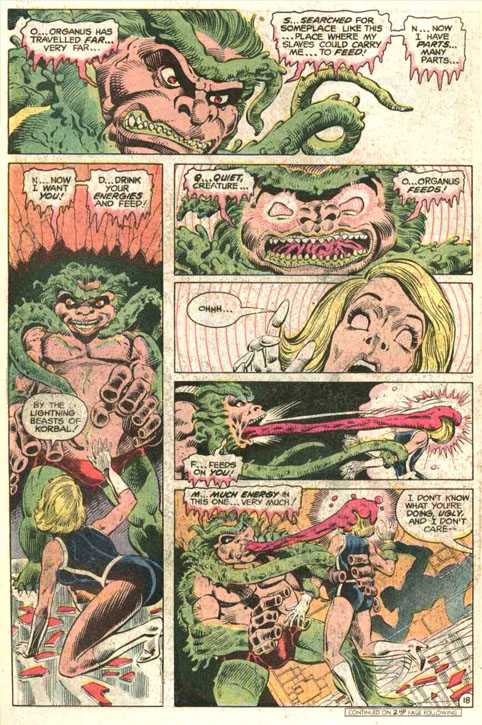
Legion of Super-Heroes v2 #284, “The Soul-Thief From The Stars,” or as it is better known, “That Time The Legion Fought A Tentacle Rape Monster.” (Particularly note the sucker-fingers, the hypnosis rape-stare, and of course Organus’ declaration that he has “many parts.”)
21
Mar
Hello, it’s your old pal Justin (note: it is acceptable if you do not consider us old pals). Something in the world of superhero comics commentary has been gnawing at me for a while, but I sort of missed my original window of opportunity to talk about it. Now that the character is back in the news again (well, comic book news anyway, or, if you prefer an in-universe source, perhaps in Newstime), I thought I might as well ask.
Can somebody explain to me, slowly and backed up with math if you can provide it, why exactly the name “Red Arrow” in considered such an abomination by comics fandom.
Don’t get me wrong, it’s not as though I’m in love with the name or anything. But I mean, you’ve got a guy called Green Arrow, his sidekick used to dress in red, and he’s a grown-up now, so he’s Red Arrow. I have to say, this sounds perfectly acceptable to me.
Do people miss the name “Arsenal”? I could get that … even though the name has that kind of 90s Image-y sort of ring to it, it’s no “Bloodaxe” or anything. I’m not that familiar with the character, but the deal at the time is that he used all sorts of weapons and wasn’t beholden to using arrows, right? It signifies a very practical sort of superhero; a man who is prepared for whatever job is at hand. But I’m not sure.
I just thought I would ask the question, because I haven’t really seen it examined anywhere. I’m not fixin’ to start a fight or anything; again, I don’t think it’s a great superhero name, but I don’t think it’s terrible, either. I don’t quite understand why “Green Arrow” gets a pass and “Red Arrow” is met with contempt.
And in the interest of being constructive … is there a better name we could call this guy?
19
Mar
Everyone understands the comic-book reboot, right? A comic (or an entire line of comics) is getting too bogged down in old continuity, making it less accessible to new readers and difficult to get people to try. So, the thinking goes, let’s start everything over again! A new beginning, from square one, looking forward to a fresh start and attracting a whole new audience with its fantastically new newness! (Did we mention “new”?) The reboot is all about erasing the slate and starting fresh.
Except that by definition, it doesn’t work. Far from being the new beginning that it’s intended to be, I would suggest that by definition, a comic book reboot is inherently nostalgic…and that in fact, reboots delay any kind of “fresh and original” stories for several years.
Because as I have commented elsewhere, a comic book is more than just its main character. It sounds like a nice idea to start over at the beginning; just retell Batman’s origin, and you’re good to go, right? But setting aside that you’ve just begun a “fresh start” to a character by retelling the one story about them that probably everyone even remotely interested already knows, you’re nowhere near finished. You also need to introduce Gotham City, Commissioner Gordon, Alfred, the Batcave, Robin, and every single member of the rogue’s gallery…which means a story retelling the origins of the Joker, the Riddler, the Penguin, Catwoman, Killer Croc, Mister Freeze, the Scarecrow, Ra’s Al-Ghul…
And where does the writer go for inspiration on every single one of these stories? They look back. They go back to the original story the character was introduced in, and they retell it. Sure, they add their own inventive spin on it. They retell it in a way tht makes sense to modern audiences, and that resonates with our time and our culture. But they retell it, nonetheless. And until they’re done retelling old stories, they can’t tell new ones.
But it gets worse. Because sometimes it’s not enough to retell the origins of characters; sometimes, specific stories and events make so much of an impact on the character’s history that they’re just not the same without that chapter in their history. The “essential” elements of Jean Grey include the Phoenix saga, her love triangle with Wolverine, and a host of other aspects that didn’t show up until years after her introduction. The death of Lightning Lad is so fundamental to the history of the Legion of Super-Heroes that it’s hard to imagine not including it in some form or another. So the “fresh start” version of the comic book has things like “the Hellfire Club story, as told by Mark Millar!” or “the Clone Saga, as told by Brian Michael Bendis!” or “the Galactus saga, as told by Warren Ellis!” And your new beginning winds up going a hundred issues without ever getting to any really new stories. It’s just a fresh coat of paint over the old ideas that made the original continuity too convoluted to begin with. (Seriously, did anyone need Ultimate Stryfe or Ultimate Onslaught?)
In some ways, a reboot is like a mild sickness that has to be gotten over before the writer can start really working on the title. Some reboots get it over with quickly–the post-Crisis Lex Luthor is so radically different from his pre-Crisis counterpart that there really isn’t a whole lot to recap–while others take longer. (*cough* Ultimate Universe *cough*) And unfortunately, as Lex Luthor shows, there’s always the danger of a relapse. The current DC editorial team seems determined to retell every single story that was ditched in the reboots, one by one if need be.
In the end, that’s the real problem with reboots; not only do they not really give the title a fresh start, they don’t really make it any more accessible. Within a year or two, the new continuity has its own backstory to wade through, and a few years after that, it’s just as convoluted and messy as the old one. (And that’s assuming Geoff “Legion of 3 Worlds” Johns doesn’t decide to try to bring back the old continuity, too.) And how does the publisher decide to deal with that? “Hey, this is too convoluted! Let’s do another reboot!” Which just dooms the series to five more years of rehashing its old plotlines. (This is why the Legion of Super-Heroes hasn’t been successful since 1985.)
So what’s the solution? It’s easy to say, but hard to do, which is probably why it’s not tried more. The solution is to make the series more accessible by writing it more accessibly. Introduce new bad guys for the heroes to fight, ones that are just as fresh to the characters and the old fans as they are to new readers. More importantly, remember the new reader when writing the story, and explain things to them as you go. Expository writing is one of the least noticed, most neglected, and hardest things for a good writer to do, but it pays off in getting new readers involved in your comic. (Or novel. Terry Pratchett, among his many other talents, is an expert at writing expository passages that explain things to new readers without boring old ones.) It takes hard work and discipline, but it’s the only real answer.
That, or make a deal with Satan. Deals with Satan always pull in the readers.
11
Mar

Some people like to point to that bit in Crisis On Infinite Earths where the Penguin is briefly depicted fighting Firestorm to a standstill as the “waitasec” moment of that series, but it’s not mine. After all, the Penguin is a pretty smart dude and he has umbrellas that shoot people. Plus, Firestorm is traditionally a dumbass.
No, the “waitasec” moment of Crisis for me comes in #10, when Earth’s villains attack Oa in the past to try and save it. (Long story.) In order to stop Krona from viewing the start of the universe and creating the multiverse by accident, the villains try to destroy his lab, and although most of them get conked out early on, three of them – the first Icicle, the first Mirror Master and Maaldor the Darklord – make it to the lab and are about to destroy it, but Krona kills them while they argue about who gets to smash his stuff. No, really.
Now, granted, the fact that he wears ancient-Roman-ish armour and wields a broadsword (and has a Jheri curl) might make him look like a bit of a low man on the totem pole. Heck, on the cover of his issue of Who’s Who he’s squaring off against Madame .44, who has the power of… two guns. But here’s the thing: Maaldor the Darklord wields the entire power of an entire sub-universe. His Who’s Who entry says he is basically omnipotent and that he can “destroy entire galaxies with a thought.” He fought the entire Green Lantern Corps to a standstill more than once.
Basically, he shouldn’t have gotten punked like that.
And here’s the other thing: Maaldor is kind of awesome in a low-rent B-list Vartox sort of way. He’s a full-on godly being who speaks of himself exclusively in the third person (like the Rock!) and hits people with a sword because he can, not because he needs to. He just like slashing people with a sword. It’s how he chills out.
That is a universe-powered being who knows what he likes. He’s due for a comeback.
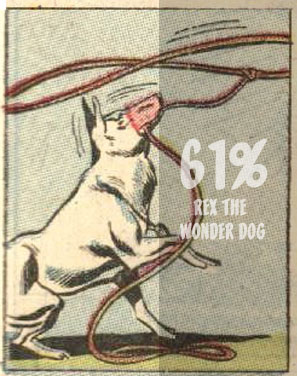
8
Mar
Jaime found this and passed it along:

It’s the blissful expression on Betty’s face, combined with the sheer terror on Archie’s, that really sells the last panel. Her parents are away on a weekend vacation. Jughead is in Shelbyville at a chess tournament. Veronica is distracted, thanks to tipping off Reggie that Archie would be “otherwise occupied.” Moose and Dilton are useless. Archie is all hers, and as she lies glibly to Ronnie, she knows at last the sweet taste of triumph.
4
Mar
So I don’t want to spoil people – well, actually in this instance I really don’t give a fuck whether I spoil people or not, but you have to say “I don’t want to spoil people,” it’s a thing – but Cry for Justice is definitely a contender for worst comic of the decade only three months into it.1
For those of you who have not been reading Cry For Justice, here is a brief summary.
Green Lantern has a hissy fit about superheroes dying and being ineffective so he quits the Justice League to go form his own Justice League with hookers and blackjack. Green Arrow follows him because, well, that’s what Green Arrow does, or something. The Ray Palmer Atom tortures some guys because they know who killed some guy he knows and he’s gonna find the guy who killed the guy he knows. Congo Bill and Mikaal Tomas team up to find people they think murdered their loved ones (and Freedom Beast!) in a sequence of scenes that barely have anything to do with the majority of the comic and are, not surprisingly, the only even slightly entertaining parts of the whole comic. Green Lantern and Green Arrow beat up a bunch of badguys and then Atom joins them for some reason and then Captain Marvel and then Supergirl show up and they’re angry about… something. So they all have a big team-up. For justice. They capture Prometheus, but it turns out that it was really Clayface2 and Prometheus turned Clayface into a bomb to kill all the superheroes, except that he wasn’t expecting Captain Marvel to stop the bomb with magic sorta so everybody lives. Finally they all meet up at the JLA satellite where it turns out Captain Marvel was Prometheus all along and he beats up the Justice League and rips off Roy Harper’s arm, but then Donna Troy beats him up and they catch him. Prometheus is all “well I needed to get to the satellite all along to use it to teleport all of your cities to someplace you’d never find them moo hoo ha ha” and then it turns out whoops his devices don’t teleport anything, they just blow shit up kinda somehow, and he’s all “well, crap, they were supposed to teleport stuff, oh well,” and the superheroes can’t figure out how to deal with bombs, so thousands of people die, including Lian Harper, Roy’s daughter (who is five!) and Prometheus all the time is all “hey if you let me go I’ll give you the disarm codes and people will stop dying.” But basically most of issue seven is the superheroes trying to beat Prometheus and failing miserably and a shitload of innocent civilians die until a light goes on in Green Arrow’s head and he says “hey, crazy idea, how about we just let the villain go free so he stops killing people,” so they do and he does and then, in an epilogue, Green Arrow somehow tracks down Prometheus in Prometheus’ secret otherdimensional lair that nobody else knows about and murders him with an arrow to the forehead and says “justice.” THE END.
No, really.
I honestly have no idea how this comic got greenlit, let alone produced. It’s so bad on every possible level that it’s not even entertainingly bad. You just have to look at it and kind of stare. I mean, I know there are going to be some fanboys who are all “no I want gritty and realistic comics about people in tights who fight crime,” and sure, those have their place I guess, but seriously, this is a comic where they kill off a five-year-old girl for added drama. Who the fuck writes that comic? Who the fuck even thinks that comic is a good idea? How many people at DC must have gotten hit in the head with a sledgehammer to have them all think “gosh, this superhero comic isn’t exciting enough… let’s kill off the cute little girl!” Was it a really fucking big sledgehammer? Because I can literally not think of a single person on the entire planet, who, when asked to tell a story, goes to the “let’s kill a little girl” well. They avoid killing children in slasher movies because they think that it’s tasteless. That’s what Cry for Justice is: it’s the comic book for people who think that slasher flicks aren’t edgy enough.
But killing off Lian Harper (and this isn’t some fanboy vendetta from someone who’s designated Lian Harper as their favorite character or anything – I really don’t care about her specifically, it’s just that they’re killing off a five-year-old-girl in their story for cheap heat and what the fuck, DC, what the fucking fucking fuck) is just the worst sin of a comic book that is so filled with stupidity and hackery that it instills a sense of shock and awe. People thought Ultimatum was bad, and it was really bad, but this is actually kind of worse because Ultimatum was written by Jeph Loeb, who hasn’t written a good comic in forever. Cry for Justice is supposedly written by James Robinson. I say “supposedly” because I’ve heard more than once that a lot of this got, ahem, extensively rewritten by People Who Shall Remain Nameless, and that rather than James Robinson it should say “Alan Smithee” in the “written by” credit. But I don’t know for sure, and frankly Robinson has written so many bad or even terrible comics since his return to DC that he’s more or less exhausted the massive benefit of the doubt he’d earned after Starman and The Golden Age and his other DC work, which is really kind of impressive when you think about it.3 Besides, Ultimatum at least had a reason for existing: to remind people that the Ultimate Universe still existed. I’m not sure why this story exists.
Here are just a few things that annoy me about this comic.
– Mikaal and Congo Bill set out to kill the people who murdered their loved ones, but when they find them (Penny Dreadful and Arak from Helix? Really, James Robinson?), Mikaal suddenly decides that he doesn’t want to kill anybody and then convinces Bill of that in less than a third of a page. This is moronic.
– Prometheus doesn’t seem to know who the Shade is or have any plan for fighting the Shade, but the bomb he built for Opal City is specifically designed to stop the Shade’s powers from fucking with it. This is moronic.
– The Justice League mostly gets beaten up by Prometheus because they decide to fight him in classic “forty ninjas versus one samurai” style, each taking him on one at a time. This is moronic.
– Prometheus, after having a super-awesome-bullet that can incapacitate Plastic Man and another that can wound Supergirl and another that can take out Red Tornado and blah blah blahdy blah makes this stupid speech about how Hawkman is “unpredictable” when Hawkman goes into a crazy battle rage, like somehow “unpredictable” can beat shooting bullets at a guy who doesn’t wear body armor or anything. Hey, Prometheus, here’s an idea for you you might want to program into your hyper-battle-computer: they’re called regular fucking bullets. This is moronic.4
– Prometheus, who is armed with super-awesome-guns and has absolutely no reason to not kill superheroes – whom he hates, remember – does not kill superheroes when he is shooting them with special bullets that can, presumably, kill them. Why does he not do this? Because if he kills them, then there’s no issue seven! This is moronic.
– The Atom tortures people repeatedly over the course of this series. When Green Arrow objects, the Atom basically says “WELL WE AREN’T FRIENDS ANY MORE.” This is moronic.
– Green Arrow murders Prometheus after spending the entire series saying stuff about how heroes should be heroic and not, you know, torture and kill people. Presumably this is meant to be ironic, and stuff, but clearly somebody had to get revenge for the dead five year old girl and it’s not like she was related to a professional assassin or anything OH WAIT. This is moronic.
– And of course there’s those bombs of his, the teleporting bombs which turn out to not teleport anything but instead just make, I dunno, little temporary black holes or something. See, the heroes can’t do anything about these bombs, because they’re immune to Freddy Freeman’s magic Shazam powers, and they’re immune to Hawkman’s mace (no, really, he says that), and they’re immune to the Shade’s shadow-powers, and when the Flashes try to create a waterspout in the river between Keystone City and Central City so they can get a better look at the bomb that Prometheus put in the river, that makes the bomb… go faster, or something like that. To repeat: Prometheus is such a good planner that he planned for super-speedsters moving away water from a bomb in a river with their super-speed. Nowhere in the comic does anybody suggest “hey, we’ve got a bunch of guys with super-strength, what happens if we just throw the bombs into outer space” but presumably Prometheus planned for that with, I don’t know, an anti-throwing-into-space-device. I mean, if he came up with a device for making water that super-speedsters are pulling away from his bomb into something that makes the bomb go faster, he totally has to have an anti-throwing-into-space-device, right? This is moronic.
I’m just pulling out a few of the high points here, because everything about this comic is so fucking stupid it makes my teeth hurt. The art is bad (the last issue has three separate artists, at least one of whom is below fanart-quality), the dialogue is frequently atrocious on a Manos The Hands of Fate level, and the plot doesn’t just fail to make sense but in fact is actively antithetical to the concept of superhero comics generally considering that this is basically a comic where the superheroes spend seven issues steadily losing, and the big triumphant finish is Green Arrow murdering a guy. And remember, this was supposed to be a Big Event Comic. DC promoted the fuckballs out of this comic. A lot of people thought this comic, which is so stupid that it could have been written by Brick Tamland from Anchorman and made more sense, was something worth publishing.
This is a colossal embarrassment on every level. It’s one of the worst comic miniseries I’ve ever read. Everybody who has their name attached to this should be ashamed for producing such horrendous crap.
3
Mar
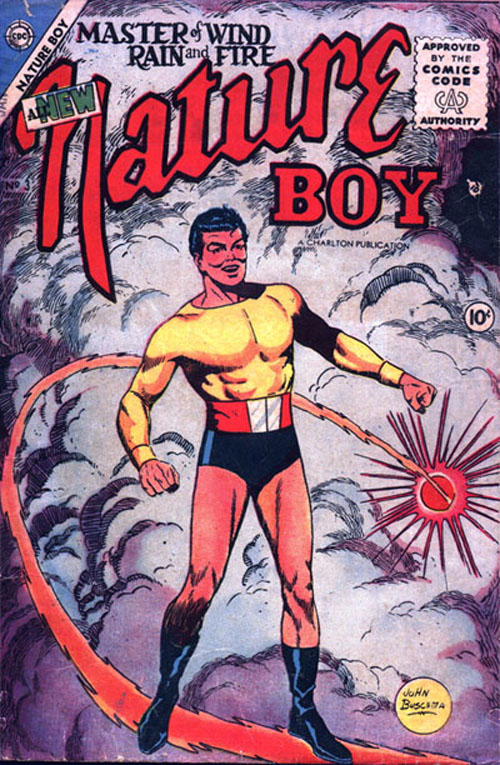
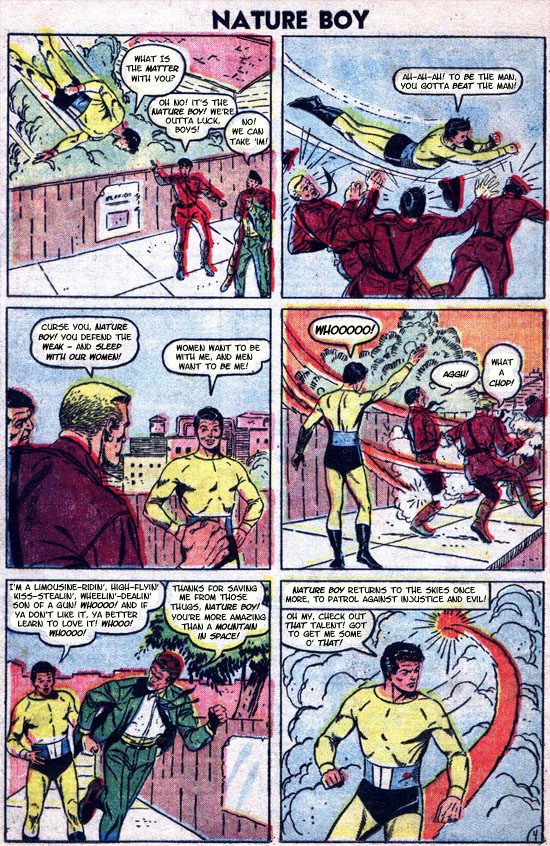
2
Mar
Rande asked:
Are you seriously not going to comment on Paul Levitz returning to Legion? I have no concept of whether this is good news or bad news and need you to tell me what to think (I actually no very little about the Legion at all aside from that period of time I was a Chris Sprouse fan and your own interesting storylines).
And then Lister Sage followed that up with
I would like to know what you thought of the Mark Waid Strange mini that just finished this week.
I mostly avoid talking about the current status quo on these titles – for reasons that I think should be obvious – but since people asked, fair is fair I guess.
On Legion, I am guardedly optimistic but only to a certain extent. The reason to be somewhat optimistic is that Levitz did, after all, write one of the best runs of any superhero comic ever when he was writing Legion – all this time later, it’s still remarkably bold and mature in its outlook, which is a combination that doesn’t happen often. If Levitz can write half as well as he did, it should be a great comic.
If he can write half as well as he did. Noteworthy creators returning to write comics after a lengthy break have a track record that is, shall we say, not good.
If editorial control on the title manages to not be hamhanded, and regardless of the power shakeup at DC I’m not very confident about that, especially with the way the Legion is seemingly being shoved firmly back into the “supporting characters in the Superman mythos” camp.
If he can make this ersatz fanboy’s wish version of the Legion compelling.
I mean, if anybody can do all those ifs, it’s Levitz. But that’s why I’m only guardedly optimistic.
As for Strange, I thought Waid captured the voice and character of Strange reasonably well and up until the final issue it felt like I’d like to see a Dr. Strange series go, more or less. (Ignoring the whole Dr. Voodoo thing, the less said about which, frankly the better.) However, that final issue – eeeeuuuurgh. Giving Casey a Morton’s fork dilemma and then having her actually take a fork rather than solve her way out of it (which is what superheroes are traditionally supposed to do, after all) was irritating, but more irritating than that was writing three issues of “Dr. Strange can barely do magic any more” and then having him heal the fabric of the universe with fucking magic in the fourth issue. I think Doc as “magical sensei who relies on students to do magical heavy lifting” is as good an engine as Doc being the Sorcerer Supreme or equivalently powerful, but you can’t actually do both at the same time, you know?
On the bright side, Waid didn’t actually kill off Casey, but instead consigned her to a distant dimension of some sort, so at least she’s not a girl-in-refrigerator. And other than that fourth issue, the series genuinely was pretty decent. Why do we need Brother Doctor Voodoo again, exactly?
Anyhow. Thok also wanted to know what I thought about Legion of Three Worlds (for which I will delay until I write something about Blackest Night next month) and Stig asked:
Batman is soon to be shunted through time by Grant Morrison in a miniseries where he dons several variant Bat-lawmaker costumes. Given that Batman is a big, popular character who is often in the spotlight, and given that you have shown a healthy interest in forgotten-and-yet awesome classic DC characters…which one would you have take Batman’s place in the trek across the ages?
That story doesn’t work with anybody other than Batman, frankly. Superman doesn’t era-analogize as well as Batman does for a horde of reasons (many of which involve power level) and nobody else in DC’s stable really merits the “myriad multiple versions of self across time and space” storyline because they’re not important enough to merit the treatment. If you did this with, say, Green Arrow it would just come across as wanking. It doesn’t with Batman. Is this fair to lesser-known characters? No, but then again they’re lesser-known for a reason.
I would love to see a variant on the “Why I should write …” series. Specifically, “Why I shouldn’t write …” and give us your worst idea, with the aid of Photoshop, on various comic properties.
It’s not funny or anything, but: the X-Men. The Avengers. The Fantastic Four. Most of Marvel’s major properties interest me not at all in a writerly sense, and I think that’s the only disqualifier for “should I write this.” If you’re not interested in writing the book you’re not going to write it well. This doesn’t mean that being interested in a property is enough to make you write it well (god knows that’s not the case) but it’s the first requirement and I don’t satisfy it for any of those books. (On the DC side? Justice League: barely. Teen Titans: not at all.)
Finally, Thok also asked
I’d like to see MGK’s take on “Why I should write Hitman Jr.”
As someone else once noticed, I had a distinct idea as to what happened to Maggie Lorenzo’s kid.
25
Feb
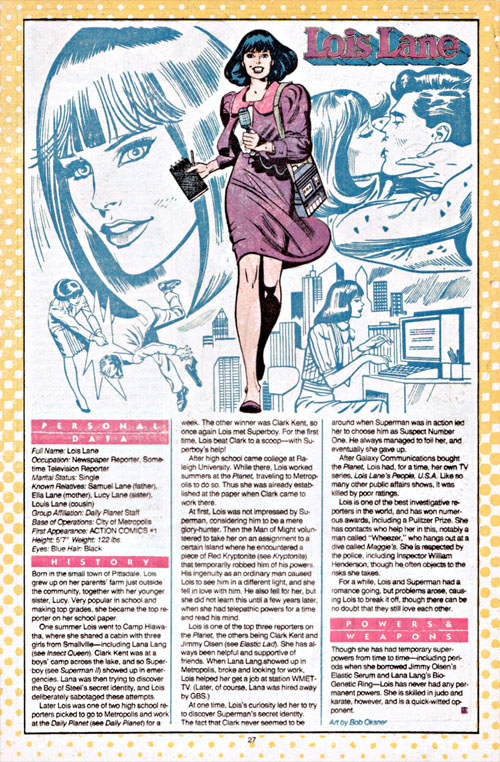
It’s worth noting that Lois Lane has a singular distinction among comics characters, being the only non-super (or, at least, non-protagonistic) character to appear in Who’s Who.1 No other non-super characters make the cut: not Ma and Pa Kent, not Perry White, not Commissioner Gordon, not Amanda Waller.2
There’s a reason why Lois makes the cut and why none of them do: it’s because, even nearly fifteen years before she and Clark finally got married, she was established as Superman’s equal. Not just his “girlfriend” – at the time Who’s Who was published, the end of the Bronze Era, Lois and Superman/Clark were actually taking a break, because the Bronze Age Superman comics had made it pretty clear that Lois already had a pretty good idea that Superman was actually Clark and she wasn’t happy about him bullshitting for all those years (not that this made her stop loving him, of course, but it was definitely a bump in the road). Hell, fans had actually been clamoring for the two to get married for some time – not just the pre-internet equivalent of ‘shippers, but longtime Superman fans.
This is why: the only natural course of action for Lois and Clark is to get married.
It’s really not like any other relationship in comics. For example, as much as I disagree with the idea that Peter and Mary Jane shouldn’t be married (and consider it exhibit A that proven comic writers like Mark Waid and Kurt Busiek and many others can still be completely and utterly wrong about characters they’ve written god knows how many times in certain respects), there’s an argument that can at least be made for them splitting up or never getting married, because Spider-Man at his essence is about the virtue of fortitude.3 Fortitude is about picking yourself up and doing good even when life kicks you in the balls, and divorce – or pathetic magic wish fiat – is a kick in the balls. On the other hand, Batman and Catwoman (or Silver St. Cloud, or Vicki Vale, or Wonder Woman, or… well, pick one) can never get together because Batman, at his essence, is about the necessity of sacrifice. Batman not only doesn’t not need a happy ending, he actively opposes one.
Superman isn’t about any of that. Superman is about truth and justice and doing the right thing; he’s a purer story than any of his contemporaries, both at once simpler and infinitely more complex. That’s why he deserves a love interest who’s just as good and as tough (and understatedly complex) as he is; it’s why Lois Lane gradually evolved from being a comedic annoyance to becoming a tough, smart reporter.4 Eventually, because this is comics and that means a little hyperbole is a given, she became the best reporter. Which is fine, because as others have written before: Superman needs a super woman.
And this is the kicker: Lois Lane can’t really be a match for Superman if she doesn’t eventually figure out the whole secret identity thing. This is because there’s a dozen perfectly good reasons why Superman’s secret identity should work, and the comics have used them all: because most people just assume he’s Superman all the time, because it’s not that hard for someone who’s practiced to act like two different people and convincingly, because most people really just don’t look, because Superman super-vibrates when he’s on duty ever-so-slightly to blur pictures of him, whatever. They all work fine, which is why jokes about “it’s only a pair of glasses” ring hollow and feel petty.
But they don’t work if you’re supposed to be an ace reporter who by virtue of being not just good at your job but the best (and Lois is the best) means you’re supposed to recognize things as being a bit off when they’re off, even if it takes you a while because nobody else would notice it. If Lois is Superman’s equal – and of course she is – she has to realize those things happening. That’s why just about every satisfactory rendition of the secret ID reveal to Lois has Lois trumping it by figuring it out on her own.5 And once she knows, there’s no reason not to get married; that’s the only bar. She’s not going to accept “it’s too dangerous” (and Superman couldn’t stay away if he tried).
And really, what’s the appeal of a status quo where Lois isn’t aware of the truth? Superman angsting about how Lois doesn’t know? Lois scheming to prove that Superman has a secret identity? Boring recycled hjinks and Superman robots and Batman pretending to be Superman and other penny-ante misogyny? That shit was stale in the Silver Age – it’s why the Bronze Age happened, for Christ’s sake – and there’s just nothing left in it. Flashback stories are fine; let them be flashbacks. The complexity of a regular relationship suits Clark and Lois to the ground. They have the same problems every other couple does, just in a slightly different way involving evil scientists and tyrant aliens and the occasional giant killer robot. But they have them nonetheless. There’s more juice in that than a thousand “oh, how will I get away from Lois this time?” sequences.
There are a significant number of comics writers who think that Wonder Woman is Superman’s perfect match, mostly because they’ve read “Men of Steel, Women of Kleenex” too many times and think that the most important aspect of Superman’s perfect mate is whether or not he can fuck her according to the rules they’ve made up in their head. However, Wonder Woman is a boring cipher. Lois isn’t: she’s her own woman, and we’re well past the point where a Lois Lane ongoing should be back on the stands. (And not Superman’s Girlfriend Lois Lane either. She can stand on her own two feet, thank you very much.)
She really is the best female character in superhero comics.

24
Feb
Okay, so let’s say I told you that in 1964, a comic book character was so out of control that the doctor prescribed tranquilizers. Let’s also say that this character started taking the tranquilizers and immediately became prone to narcolepsy. And let’s throw in the fact that even in a state of drug-induced narcolepsy, this person couldn’t stop stalking two other characters and making their lives miserable. Which character do you think I’m talking about?
I’ll give you three gu… aw, hell, you’ve guessed it already, haven’t you (click on thumbnails to read the pages).
The story more or less speaks for itself. Well, the ending might need a bit of explanation. Suffice it to say that tranquilizers, sedatives and other knock-out pills were at the height of popularity in the early ’60s. So a comic book about two teenagers choosing to take someone else’s clearly dangerous prescription drugs? Not a problem. I mean, it’s not like they’re drinking beer or something.
And a question for experts on Betty Cooper’s mental state: do you think her doctor prescribed this incredibly strong medication because he was trying to take her out of commission, or is this just the dosage she prefers?
Finally, those who like spotting hidden messages in old comics might note the names and initials on the bench:

“Dan” and “Josie” are Dan DeCarlo and his wife (yes, that’s where he got the name) while “Rudy” and “Mary” are DeCarlo’s inker Rudy Lapick and his wife. “Harry” is probably Harry Lucey. And LBJ might or might not be a politician of some kind. That one’s for comics historians to decide.
23
Feb
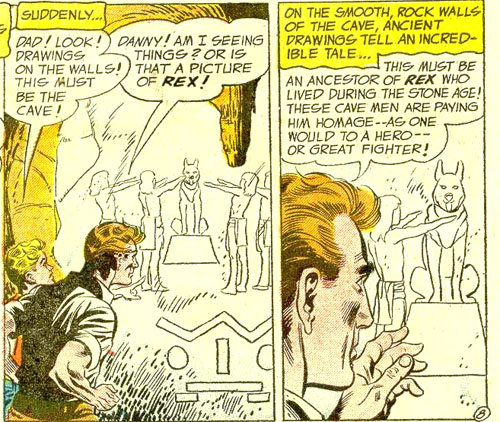
Yeah, you just keep telling yourself that, Mr. Thinks He’s The Leading Man. “Ancestor.” Instead of the truth right before your eyes, which is that ancient Egyptians somehow came to worship Rex the motherfucking Wonder Dog.
"[O]ne of the funniest bloggers on the planet... I only wish he updated more."
-- Popcrunch.com
"By MightyGodKing, we mean sexiest blog in western civilization."
-- Jenn
